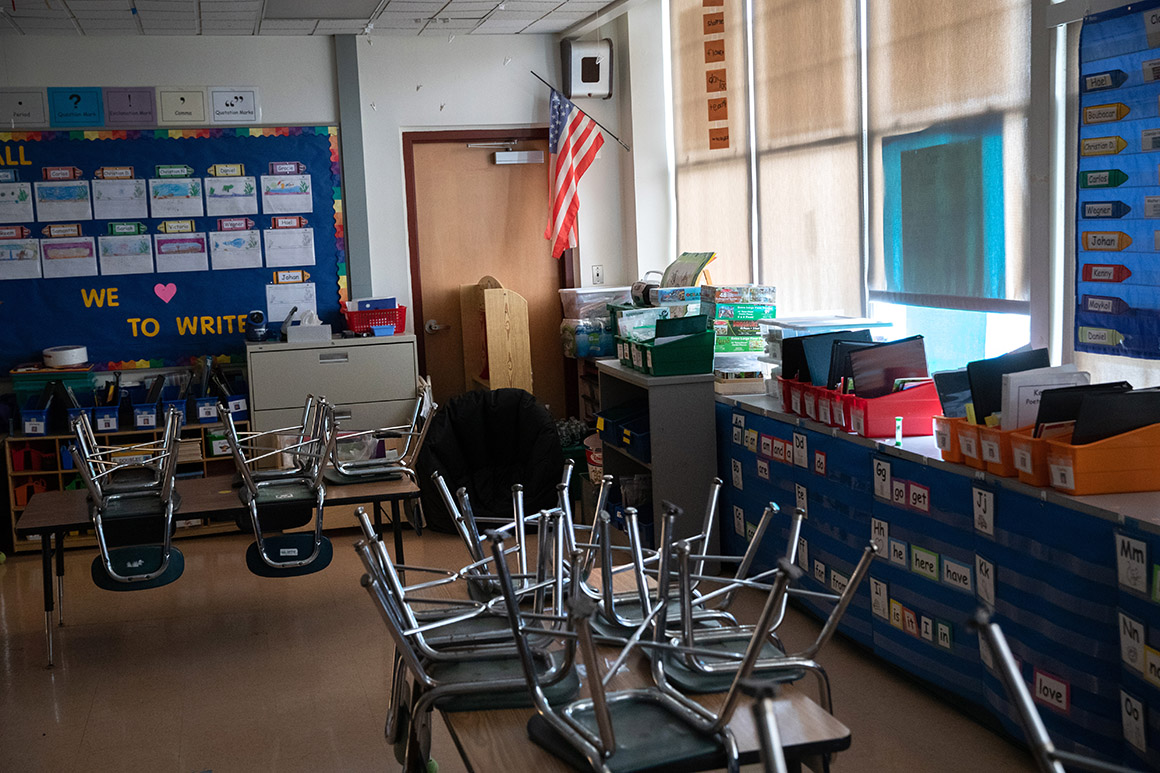
This situation should be more manageable academically because many schools are still operating, even if virtually, so there will be less trauma and the disruption may be shorter. But he still sees similarities between the two events: Both forced students from their schools, and while today’s students aren’t fleeing their homes, the coronavirus is shoving students into social isolation — and it’s still scary.
“Schools will do the best they can under the circumstances, but they don’t have practice in this,” Harris said. “So teachers are going to be winging it and students will almost certainly not learn as much as they were in the past. And that’s what we saw with Katrina.”
The virus has cascading consequences in store for the education system, Moffat Miller said, consequences that won’t vanish if and when the virus stops circulating.
Some students are better equipped to learn outside of the classroom than other students. States and school systems face enormous costs. Testing and other systems designed to make schools accountable will need to be modified.
“And there will inevitably be questions that we haven’t even thought of yet that we’re going to need to address,” Moffat Miller said.
For high school students headed to college, it’s meant trying to stay on top of shifting and confusing college testing plans. Earlier this week, the College Board announced it was exploring options to have students take much-anticipated AP exams at home „depending on the situation in May,“ with more information to come. The exams are the end point for a year’s study of college-level material and high scores can be used in some instances for college credits.
ACT on Monday announced that its test scheduled for April 4 will now take place on June 13 instead. The College Board announced it was canceling the SAT scheduled for May 2.
In Kansas, where schools are expected to be out through June, the Department of Education’s continuous learning task force, comprised of educators, has worked on guidance to help schools. They are working to move education online, assist students without access to online tools, provide for at-risk students and those with individual education plans and distribute meals for students who need them.
“We’re looking at special ed students and what requirements we have for them and to get their best learning in place. We’re looking at seniors who are trying to graduate and are in panic mode because they don’t know how they will. We’re looking at all of those things so that learning will continue,” said Marcus Baltzell, spokesperson for the Kansas National Education Association.
He added, “We’re essentially redesigning education in Kansas and we’re doing it in three days.”
Washington state recently started working on potential criteria for a streamlined process to ensure that students who are on track to graduate this year can actually do so.
Student closures, even from vacations, always have high costs for learning, said Andreas Schleicher, the Organisation for Economic Co-operation and Development’s education director and head of the Programme for International Student Assessment, which measures high school students’ performance internationally.
But he said the U.S. can look to other countries, such as China, where students were quickly moved to an organized learning environment online. Some teachers in France, he said, have been working with their students on Zoom, which gives them a way to connect even if it’s not an education platform.
“I think the U.S. can really learn from those countries that have been able to manage this in a matter of weeks or days to bridge that kind of school-closure gap,” he said. “So I think this is not an insurmountable kind of challenge.”
The U.S. is different from other parts of the world, however, in that its systems are decentralized, with no national standards or curriculum, said Ary Amerikaner, vice president for P-12 policy, practice and research at The Education Trust. “While each state has common standards, individual educators may be using different instructional materials and a variety of electronic resources at their disposal,” she wrote in an email.
The other issue is digital equity. “Many of our schools were not set up for remote learning, and, where it does exist, there are concerns about how equitable access and opportunities are for our most vulnerable students,” she wrote.
Millions of students in the U.S. already struggle with what’s known as the “homework gap” because they don’t have broadband internet at home, and school closures will worsen the digital divide for these students, typically from low-income and minority households.
Senate Democrats are pushing to address this issue as part of a legislative response to the pandemic, and the Federal Communications Commission is working with Congress to secure funds for programs to support in-home equipment for affected students. Extra support from states and the federal government is “essential” now, said Keith Krueger, CEO of CoSN, the Consortium for School Networking.
The FCC should also strengthen and offer more flexibility from its educational technology program, E-Rate, and provide mobile hotspots and broadband connections to rural and other unconnected students and teachers, he said in a statement. Meanwhile, the Education Department, states and districts should invest in training on teaching strategies for this emergency, he said.
„Utilizing e-learning is quickly becoming a requirement of school districts across the country and not just a choice, he said in a statement.
Harris, meanwhile, wrote in a blog for Brookings that while technology could be used to help students in the short term, more funding should be devoted to summer school. “Sometimes it’s best to fight the old-fashioned way,” he said.
Juan Perez Jr., Nick Niedzwaidek and Andrew Atterbury contributed to this report.
Source: politico.com
See more here: news365.stream






